Malcolm Anderson continues a serialised walk along the Jurassic Coast.
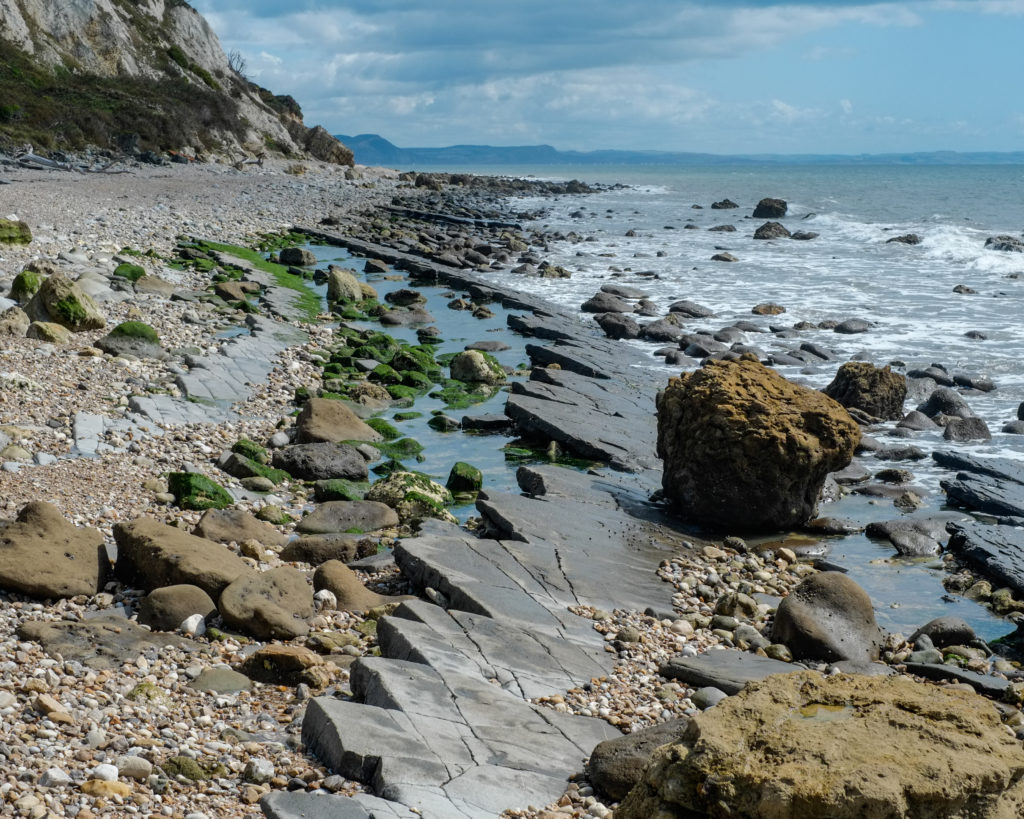
Beyond the steel carcass of the dredger the beach turns slightly inland and the geology changes underfoot once again, deep grey bedrock sheets exposed at an angle sloping towards the sea. Embedded in the slabs of grey are the swirls of ammonites, echoes or outlines of ages past. I should be walking, moving on towards Lyme, but time is lost amongst this free-to-enter open-air museum.
The tumbling higgledy-piggledy mess of the Downland Cliffs falls onto the beach here, gin-clear streams appearing out of the choked scrub.
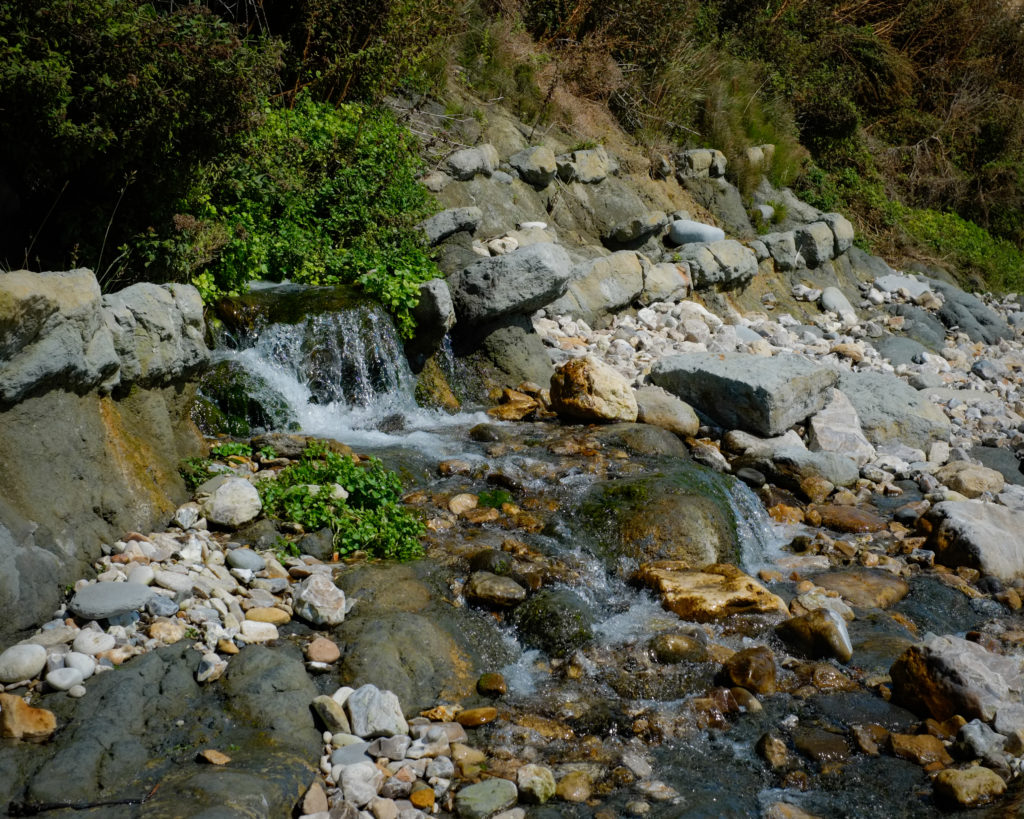
Here and there the bleached white bones of storm-borne trees sit high and dry, worn smooth by tide, sun and wind. I stop again, sit on a smooth trunk and lose more time absorbed in the act of just being.
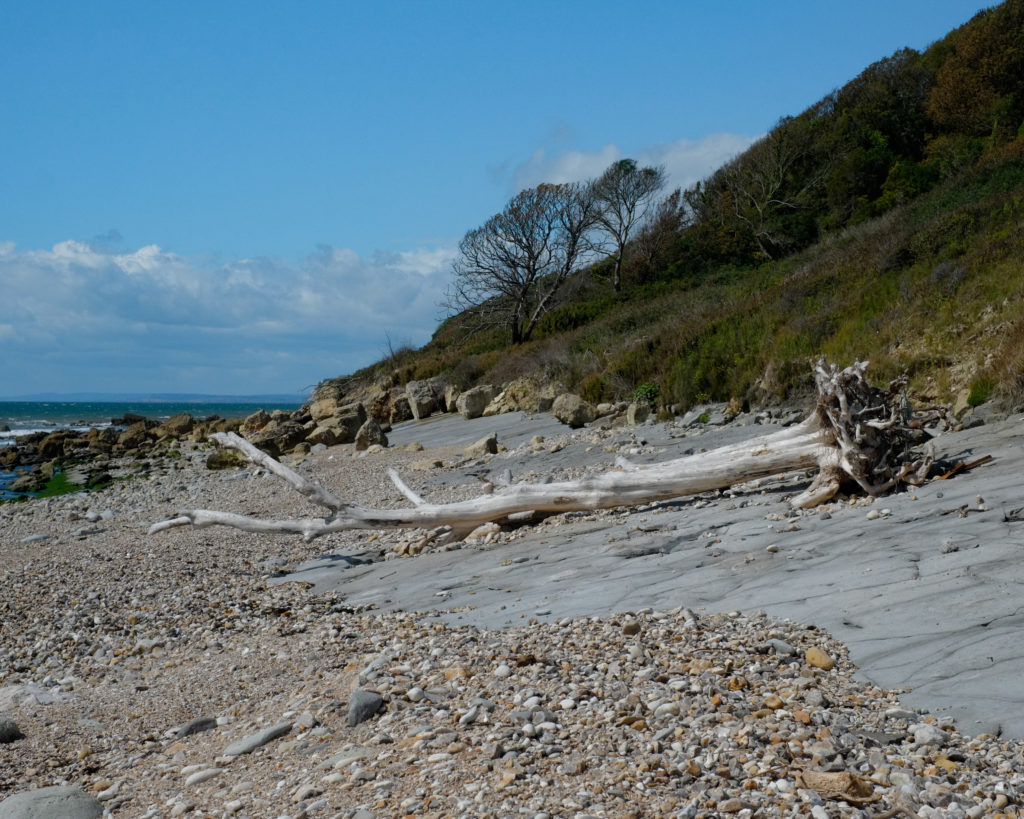
The receding tide has exposed the jagged teeth of upturned rock ledges on the shoreline and between these, knee-deep rock pools have formed. I take off my battered, clay-whitened boots and socks, hobble across the shingle beach and paddle into the chilly waters. I turn rocks carefully, exposing small crabs and fish who flash off quickly to cover, seaweed ghosts against my shins. Bottle green and bull’s blood red anemones dot the drying rocks like blobs of jelly.
Out to sea, light and shadow chase each other across the horizon on a stiffening breeze as clouds scud by. The wind in the trees and the restless sea are the only sounds.
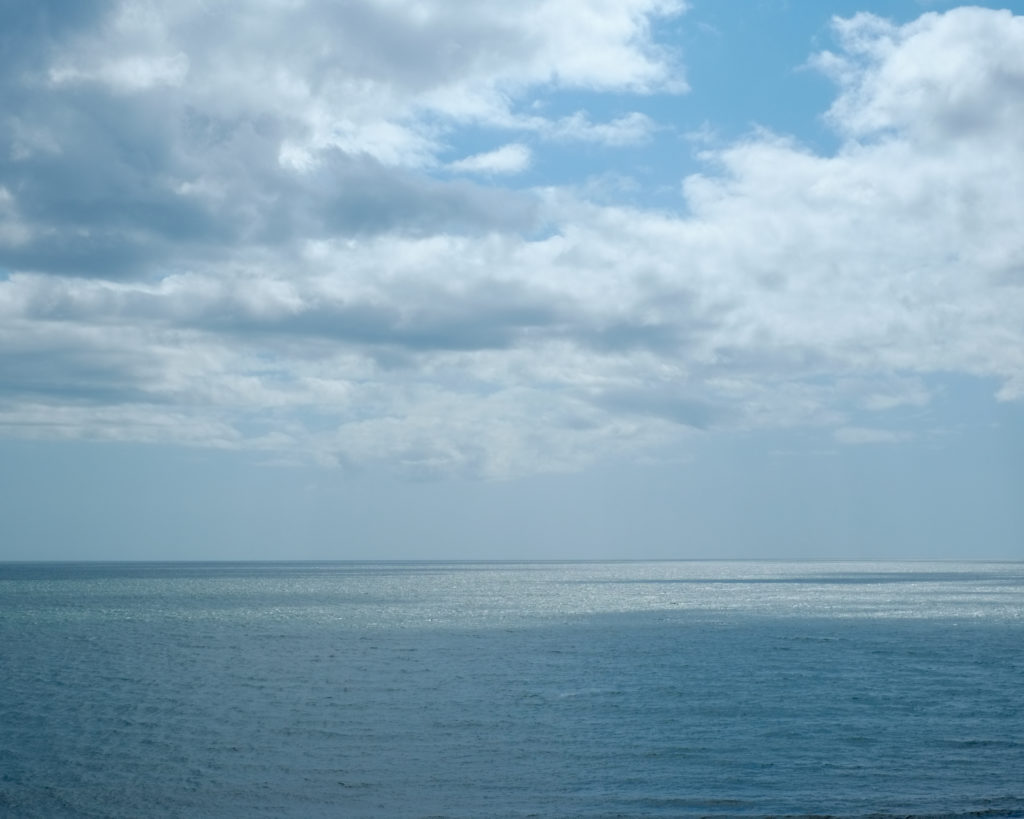
The last quarter of a mile has taken me about an hour and a half. Inwardly I have a word, put my boots back on and shoulder my pack.
Ahead of me the cliffs steepen again and the beach turns inland into the wide open swoop of Charlton Bay. The shingle here becomes smaller, sparser, gaps appear and after a short while I’m walking on pebbly sand.
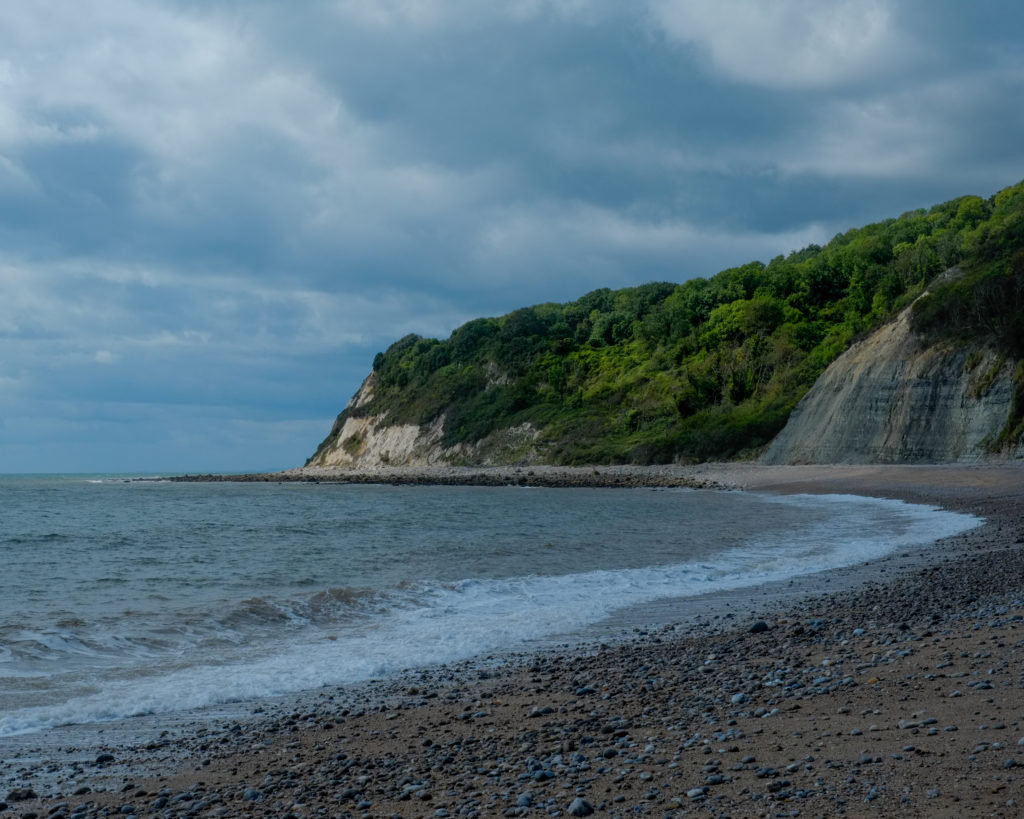
The crazy tumbling green sea of tree cover falls in places to touch the beach and in the distance I see the first people I’ve seen since leaving Axmouth.
As I get closer I say hello to the young family who have come down onto the beach from the coast path. What a place for a five-year-old; fossils, rock pools, fresh air… freedom!
I can imagine that the walk back to Lyme won’t be pleasant for them with those young legs tired out, but for now the adventure and the beach is theirs so I leave them in peace and head on to the next headland.
I pass amongst the greensand lumps of Humble Rocks, evidence once more of geological shifts under my feet, and keep walking around the headland. The walk from here is the stretch you’d really need to watch at high tide, as the intertidal zone shrinks towards the cliffs. The tide is well out now though, and from here I can see the Cobb at Lyme Regis in the distance, just beyond Pinhay Bay, Seven Rock Point and Devonshire Head.
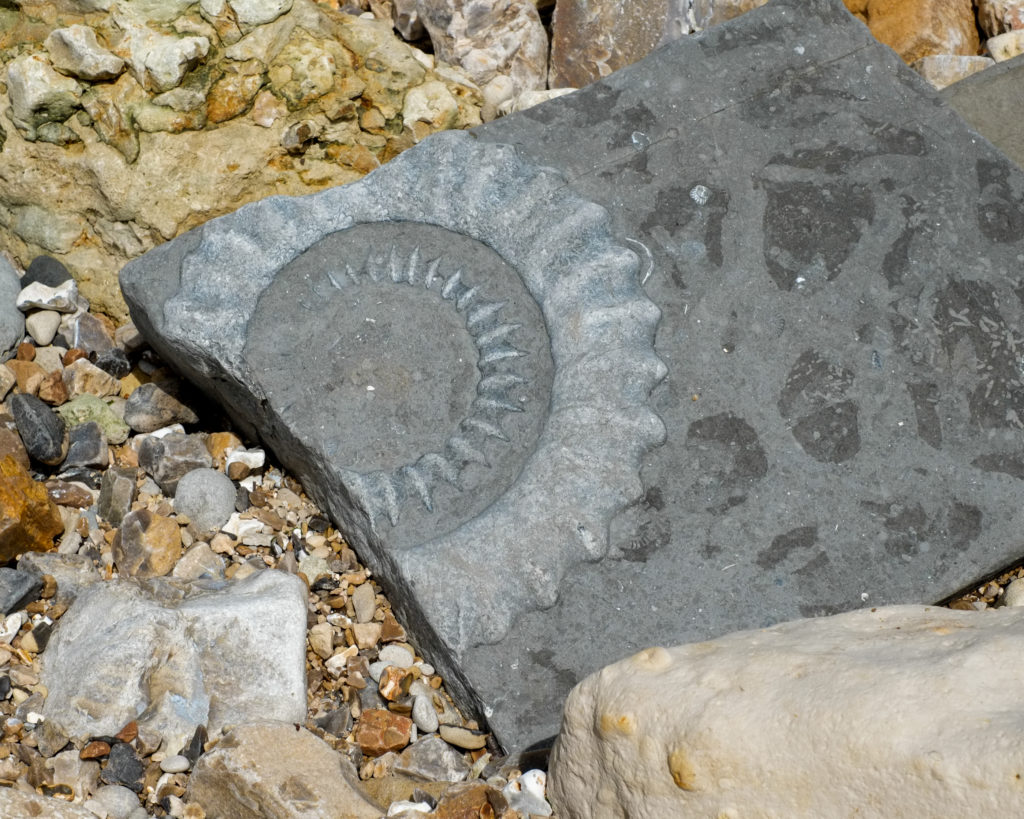
One of the beauties of the walk to this point has been that you can never see further than the next headland. There’s something new beyond each rocky outcrop. From here however, I can see the end destination and my day suddenly feels more finite. The next sections just seem less appealing because from here on in I can see the bustling town and the end of the walk.
Steeling myself for the shift in atmosphere I keep going, but clambering over a rocky section, I bump into another person.
Sitting with his back to a sun-warmed rock is a man that I can’t quite age. A white beard stands out against a tanned face, and next to him on the rocks are the well-worn tools of a seasoned fossil hunter and a battered thermos flask. His boots are bleached from the clay dust and his shirtless torso is bronzed by the sun, except for the thin bands of white from his backpack straps.
This, it is pretty obvious, is a man that spends a lot of time out here away from the crowds. As we chat it turns out he does this walk along the foreshore regularly. I mention the disappointment of being able to see the journey’s end from here on in and he agrees and offers an alternative route.
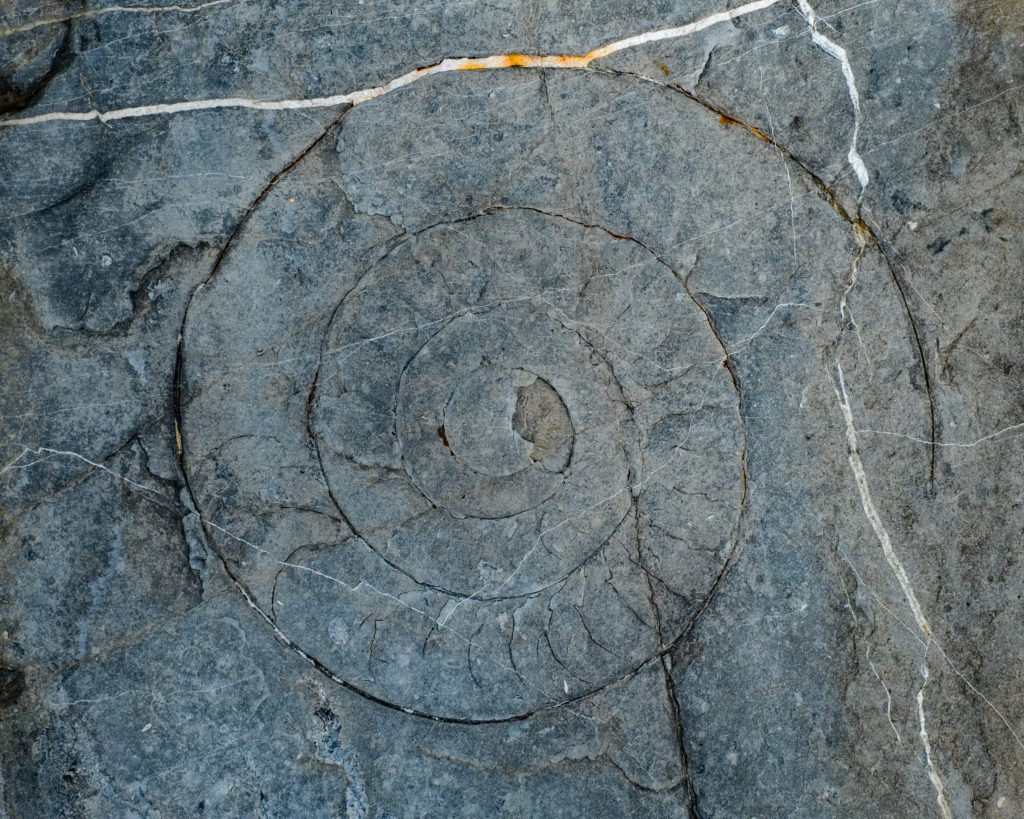
This section of the SW coast path runs mostly parallel to the coast, albeit with some twists and turns, but there’s only one point between Axmouth and Lyme where there’s any access from path to shore, and that is at Charlton Bay. There are however a few reasonably well-established paths that have seen feet over the years in places; you just need to know where they are as they’re not marked in any way. It’s to one of these paths that the fossil hunter points me, some distance up the beach towards Lyme.
With a handshake and thanks for the tip I pass on, scouring the scrubby cliff edges for the signs of a path upwards. In a short while I see the tell-tale marks of boot prints in the wet clay and strike upwards through the scrub, watching every step carefully and taking care not to lose the faint path through the ferns and fallen trees.
At a level spot overlooking the beach I find a ring of blackened stones and the ends of some burnt logs – around the fire, cans and bottles are strewn. I stop for a moment, sit on a soft grassy spot and eat my lunch from my backpack and watch the sea a while. Once done I pick up all the cans and bottles and put them in my pack, muttering about feckless teens as I do so, and start clambering up through the undergrowth once more.
Turning a corner and ducking under a fallen ash I can hear voices suddenly.
I stumble out of the bush onto the coast path, surprising myself, and the walkers coming the other way. Flustered, I say good afternoon and exchange pleasantries, then turn to see where I emerged from but can’t see any trace of the path I was on, so I take off in the direction of Lyme.
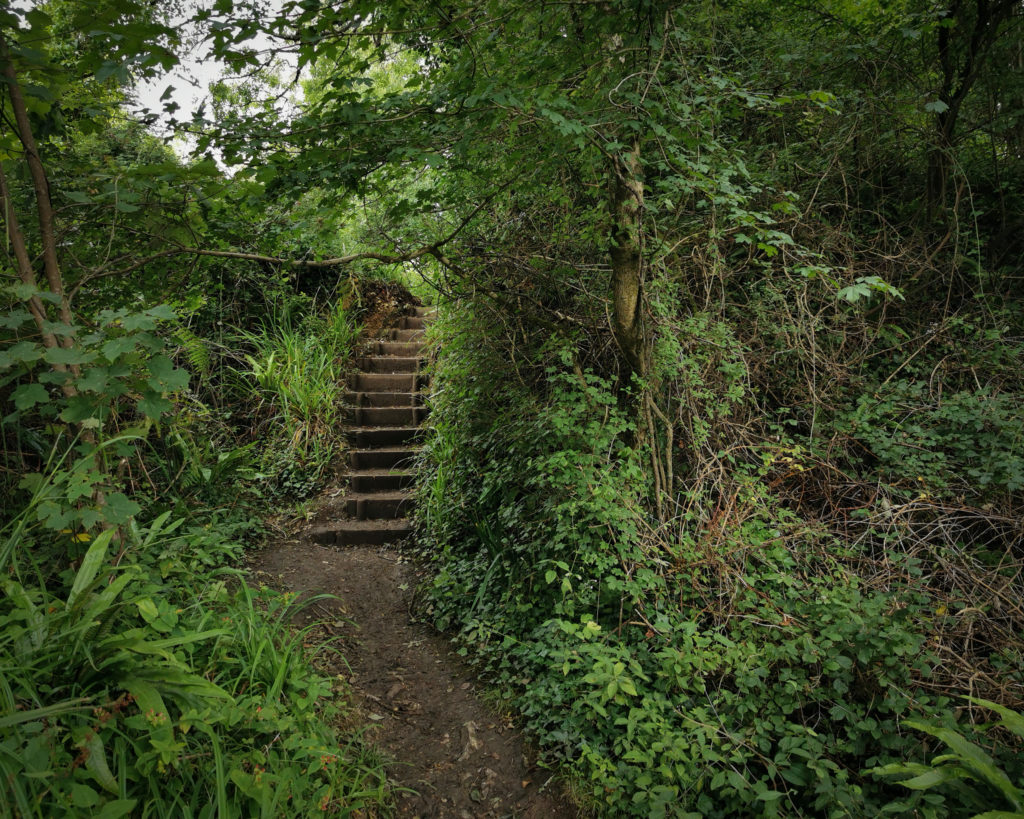
After the wide open foreshore walk this part of the route feels more oppressive and like hard work; there’s no view to speak of and each footstep slides in the Devon muck. Seemingly at every bend in the path I come across a set of steep, irregular sized wooden steps heading up or down and in the humid air insects pester my face constantly.
Under Pinhay Cliffs the path widens and the trees thin enough to let in some daylight and to see the looming wall of chalk above.
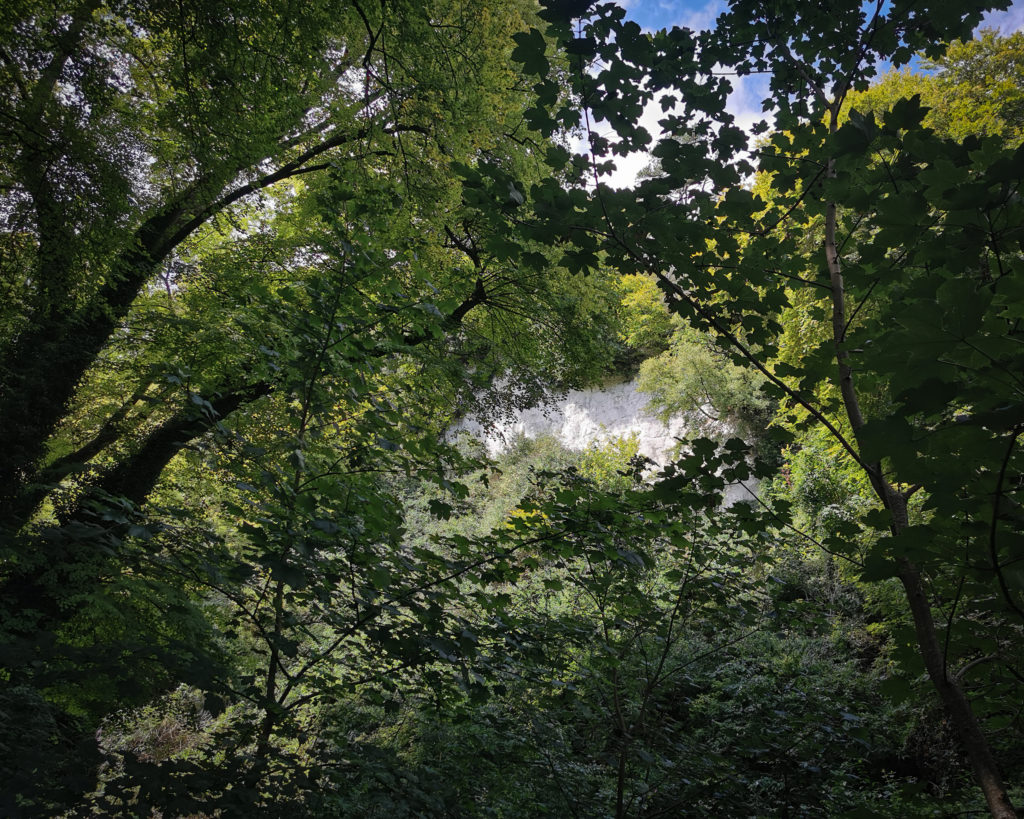
Stood here looking up you get a real sense of the scale of the upheaval that threw this landscape about; this is not the drip drip drip of gradual change. It must have seemed cataclysmic to people in the 1800s.
A man in flip flops and a string vest walks towards me from Lyme, followed by a family shouting after their dog who, it appears, has taken an alternative route than the path.
The presence of so many people comes as something of a slap after so much solitude, and the pressure only increases as I emerge from the woods and hit the tarmac path that leads up and over Ware cliffs.
One final long flight of steps and I’m in the middle of a peak tourist day in Lyme. Cars are queuing to leap into any space that opens and children are dropping ice creams on pavements. The sun is shining, and people are out in force.
I duck into the first pub I find and hide in a corner with a pint of cider while I check maps and bus timetables, thinking ahead to the next escape.
*
You can read about the first leg of this walk, from Axmouth to Corbin Rocks, here.
Malcolm is currently crowdfunding to help get his next book, documenting the changing lives of people living on the coasts of Dorset, Devon, Cornwall and Somerset, off the ground. He’ll be walking the entire 630 miles of the SW coast path to collect their stories. You can read more/chuck him a few quid here.